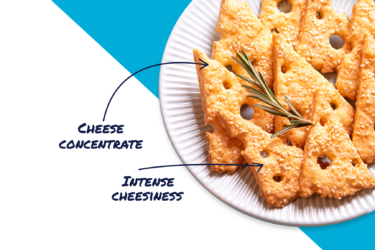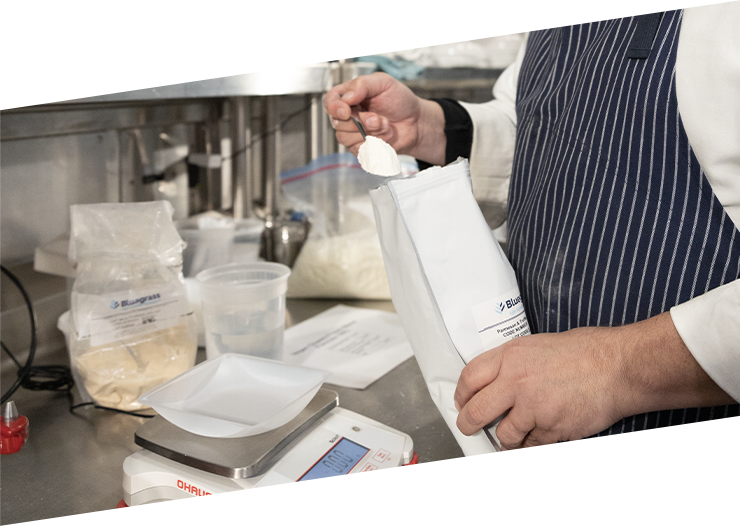
Cheesy Crackers-Premium
These crackers combine traditional cheese ingredients with Bluegrass Ingredients’ innovative cheese concentrate.
Bluegrass Ingredients On-site Hiring Event | March 19 | Glasgow, KY.
With an unlimited budget, easy access to any ingredient, and no dietary restrictions or labeling constraints to consider, it’s pretty easy to come up with formulations and foods that taste great.
But that’s not how things work in the real world. Today’s food manufacturers are forced to contend with a number of variables that can impact product development.
All of these factors play a significant role in developing formulations in a food manufacturing environment. Adjustments for manufacturing-friendly ingredients and processes add additional considerations that impact development.
That’s where the art and science of food manufacturing comes into play.
It’s about developing the best formulation while accounting for the variables that can impact a product’s ultimate success in the market and in the eyes of consumers.
Bluegrass Ingredients recently tackled these exact challenges, crafting two different formulations for cheesy crackers that solved for different customer and consumer needs and expectations. Here’s a closer look at that art and science in action.

Bluegrass Ingredients set about developing formulations for two variations of cheesy crackers – a “premium” formulation and a “value” formulation. The work was done by the Agile Kitchen at Bluegrass team of food scientists, culinary experts and cheese specialists. The Agile Kitchen is Bluegrass Ingredients’ incubator and R&D space for advancing flavor, form and function in ingredients and formulations.
The Agile Kitchen team ran eight iterations to narrow in on two versions optimized for “premium” and “value” attributes. At a high level, the effort was prompted by efforts to control costs. The goal was to maximize the flavor while reducing the amount of conventional cheese in the formulation. But the exercise jumpstarted several questions around innovations coming out of the Agile Kitchen.

The Agile Kitchen team has tackled similar questions in the past, but each formulation is unique and offers an opportunity to advance new innovations that can benefit current and future customers.
Ultimately, the team developed two formulations that met the project parameters.
The formulations have the same ingredients, with one key difference: The “value” formulation has no conventional cheese products.
That’s a significant accomplishment. It shows the potential of dairy concentrates in helping reduce the need for conventional cheese and the cost and availability challenges that can come with it. Adding just under 5% of cheese concentrate delivered that cheesy flavor and reduced the need for conventional cheese – and in the “value” formulation eliminated it all together.
Interestingly, both variations included just under 5% of cheese concentrate. All the necessary cheesy flavor was achieved through the concentrate in the “value” variation. It just took increasing the ratio of flour, water and shortening to achieve the right overall flavor and texture. The lemon powder helped normalize the flavor curve while accentuating the sharp cheddar flavor – another key innovation that can be integrated into other product development efforts.

When testing and consumer feedback says there’s not enough flavor in something like a cheesy cracker, a food manufacturer’s first step is likely figuring out how to add more cheese. This exercise shows that with the right R&D team and expertise, that’s not always the best approach.
Sometimes the solution lies not in buying more ingredient, it lies in innovating a new approach or harnessing a new ingredient.
In this effort, price and its impact on flavor were the driving factors in developing the formulation. But Bluegrass Ingredients offers a full suite of ingredients and solutions that have tremendous potential to drive innovation around other product development priorities, from altering the spiciness of a specific product or developing vegan or clean-label varieties.
Understanding which formulations to prioritize starts with good market research and supporting R&D efforts. Look at flavor trends, industry analyses, competitor activity, past sales data, customer details and more to understand where to focus product development efforts. And if you’re looking for an innovation partner or solutions provider, reach out to our team.
Contact us today to get started.
